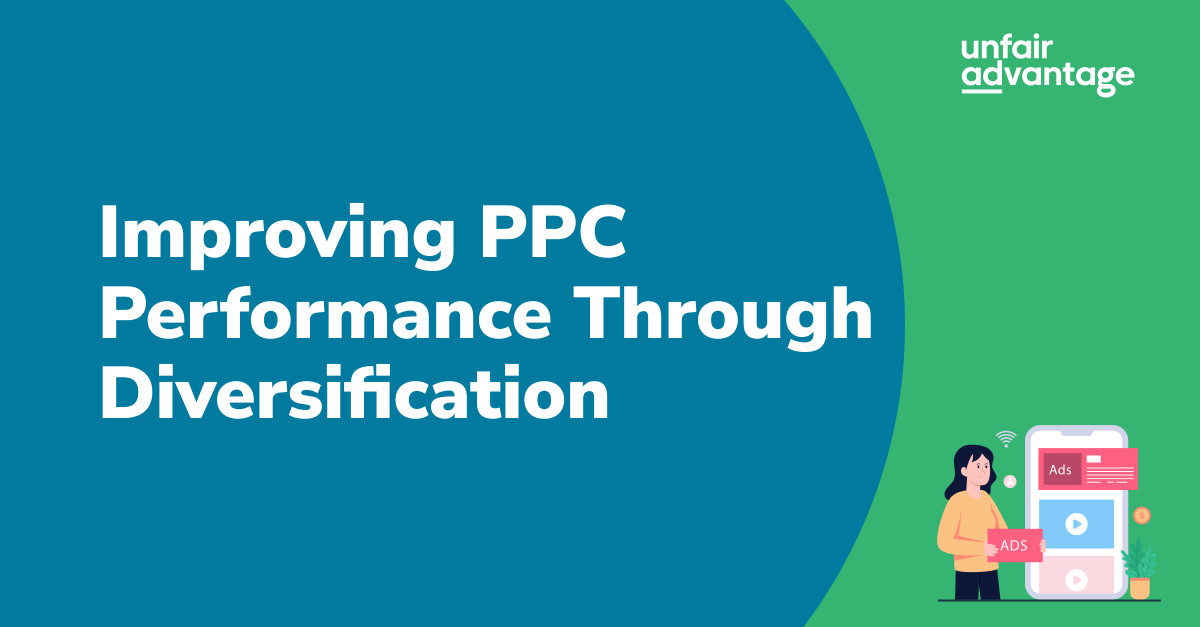
Published in:
Blog
Improving PPC Performance Through Diversification
In the competitive world of digital marketing, Pay-Per-Click (PPC) advertising stands as a pivotal element of many organizations’ online strategies. Yet, as the digital arena becomes more saturated and the behavior of consumers evolves, sticking to a singular PPC platform or strategy might not yield the desired outcomes. Enter the strategy of diversification—a method that not only broadens your campaign’s horizons but also significantly boosts its effectiveness.
Diversifying your PPC efforts is akin to casting a wider net in the vast ocean of digital marketing. This approach doesn’t just minimize potential risks; it also uncovers new avenues to engage with the diverse segments of your audience.
In this post, we’ll dive deeper into not only the why and how of PPC channel diversification but use a compelling case study to showcase the importance and the success you could have by doing so.
The Importance of Diversification in PPC
First things first, at the root of it all diversification is focused on ensuring all your advertising efforts are spread effectively across multiple platforms and strategies. This approach not only helps mitigate risks but also opens up new opportunities to reach different segments of your target audience. At the end of the day you wouldn’t want to put all your eggs in one basket, right? By diversifying, you can:

 Conclusion
Diversification in PPC is not just about spreading risk; it’s about strategically expanding your reach and harnessing the strengths of various platforms and techniques to boost your campaign’s performance. As the digital landscape continues to change, staying flexible and open to experimentation will be key to PPC success.
For businesses looking to enhance their PPC strategies further, exploring professional digital marketing services can provide the expertise and insights needed to navigate the complexities of multi-platform PPC campaigns. Unfair Advantage PPC management services for small businesses offer a comprehensive approach to PPC management, focusing on maximizing ROI through data-driven strategies and tailored campaign optimization.
Interested in taking your PPC campaigns to the next level? Contact us today to learn how our expertise can help drive better performance and results for your business.
Conclusion
Diversification in PPC is not just about spreading risk; it’s about strategically expanding your reach and harnessing the strengths of various platforms and techniques to boost your campaign’s performance. As the digital landscape continues to change, staying flexible and open to experimentation will be key to PPC success.
For businesses looking to enhance their PPC strategies further, exploring professional digital marketing services can provide the expertise and insights needed to navigate the complexities of multi-platform PPC campaigns. Unfair Advantage PPC management services for small businesses offer a comprehensive approach to PPC management, focusing on maximizing ROI through data-driven strategies and tailored campaign optimization.
Interested in taking your PPC campaigns to the next level? Contact us today to learn how our expertise can help drive better performance and results for your business.
- Expanded Audience Reach: Different platforms cater to varying demographics and user behaviors. By diversifying, you ensure that you’re visible to potential customers across a wider array of channels or even users who might prefer one platform over another.
- Optimize Budget Allocation: Some platforms may offer lower costs per click (CPC) or better ROI for certain types of campaigns. Diversification allows you to allocate your budget more efficiently.
- Increased Campaign Stability: The digital marketing landscape is prone to sudden shifts, be it due to algorithm updates or platform changes. Diversification builds a buffer against these uncertainties, maintaining steadier performance across your campaigns.
- Explore Multiple Platforms
- Beyond Google Ads, consider platforms like Bing Ads, Facebook Ads, and LinkedIn Ads. Each platform offers unique targeting options and user bases, allowing for tailored strategies that resonate with specific audience segments.
- For G&W Electric, Bing Ads offered two things Google did not: cheaper CPCs (the average cost-per-click on Bing Ads can be up to 33.5% lower compared to Google Ads) and additional audience targeting options (more on that below!).
- Use Advanced Targeting Options
- Take advantage of the advanced targeting options available on different platforms, such as demographic targeting, interest-based targeting, and retargeting. These options allow you to refine your audience and reach people more likely to convert.
- As mentioned above, expanding into Bing was not only cost-effective but opened us up to more advanced targeting capabilities. A unique advantage of Bing Ads is the option to reach relevant audiences with LinkedIn Profile Targeting. This means we would layer in targeting to users based on their company, job function and industry.
- Experiment with Different Ad Formats
- Leveraging a mix of text, display, video, and shopping ads (for the ecommerce folks) can help you capture the attention of your audience in various stages of the customer journey. Experimenting with different formats can also reveal what works best for your products or services.
-
-
-
- Google Responsive Display Ads
- Google Responsive Display Ads
-
-
-
-
-
- Google Video Ads
- Google Video Ads
-
-
-
-
- For G&W Electric, we also diversified in Google Ads through expansion into the Google Display Network, and eventually Performance Max, campaign strategies. This allowed us to leverage new visual ads through display and video as well as show up to potential customers across a wider network of placements.
-

- Implement a Cross-Channel Strategy
- Cross-channel marketing involves integrating your PPC efforts across multiple platforms to create a cohesive user experience. This approach can enhance brand recall and improve conversion rates as users encounter your brand across different touchpoints.
 Conclusion
Diversification in PPC is not just about spreading risk; it’s about strategically expanding your reach and harnessing the strengths of various platforms and techniques to boost your campaign’s performance. As the digital landscape continues to change, staying flexible and open to experimentation will be key to PPC success.
For businesses looking to enhance their PPC strategies further, exploring professional digital marketing services can provide the expertise and insights needed to navigate the complexities of multi-platform PPC campaigns. Unfair Advantage PPC management services for small businesses offer a comprehensive approach to PPC management, focusing on maximizing ROI through data-driven strategies and tailored campaign optimization.
Interested in taking your PPC campaigns to the next level? Contact us today to learn how our expertise can help drive better performance and results for your business.
Conclusion
Diversification in PPC is not just about spreading risk; it’s about strategically expanding your reach and harnessing the strengths of various platforms and techniques to boost your campaign’s performance. As the digital landscape continues to change, staying flexible and open to experimentation will be key to PPC success.
For businesses looking to enhance their PPC strategies further, exploring professional digital marketing services can provide the expertise and insights needed to navigate the complexities of multi-platform PPC campaigns. Unfair Advantage PPC management services for small businesses offer a comprehensive approach to PPC management, focusing on maximizing ROI through data-driven strategies and tailored campaign optimization.
Interested in taking your PPC campaigns to the next level? Contact us today to learn how our expertise can help drive better performance and results for your business. 


